
Abundant throughout forests and grasslands across the U.S., grouse are tasty cooked in a variety of ways. The breasts -- the tenderest part of the birds -- lend themselves to broiling, baking or frying. Meat from game birds is safe to eat when the internal temperature reaches 165 degrees Fahrenheit. Use a meat thermometer to determine when the grouse breasts are done.
Versatile Baked Grouse
Baked grouse breasts taste best if you brown the breasts lightly in hot butter or oil first, then place the browned breasts in a baking dish. To keep the breasts moist, place a strip of bacon under each breast and another strip on top. Alternatively, glaze the breasts or cover them with sauce or gravy before baking. If you wish, add orange or apple slices, or top the breasts with fresh mushrooms and fresh, chopped parsley. Bake the breasts for 30 to 45 minutes at 375 F, or until a meat thermometer registers at least 165 F.
Simple Pan-Fried Grouse
Pan-frying is a simple way to prepare moist, juicy grouse breasts. Preheat a skillet over medium heat, then add a small amount of butter or oil until it is nearly smoking. Fry the breasts, turning often, until both sides are brown and the center of the breasts register at least 165 F. You can also bake the breasts in the oven first, then fry them to give them a crispy outer coating. Let the baked breasts cool in the refrigerator, then cut them into 1/4-inch slices. Beat an egg and a small amount of milk in a bowl and place cracker crumbs in a separate bowl. Dip the slices in the egg mixture first, then dredge both sides in the cracker crumbs and fry in hot butter or cooking oil.
Crispy Broiled Grouse
To broil grouse breasts, slice the breasts in half, then dip in melted butter or olive oil. Heat a small amount of chicken broth in a small saucepan, then turn the burner on low to keep the broth warm. Place the grouse 3 to 4 inches from the broiler and broil the breasts for about 15 to 30 minutes, turning once, until a meat thermometer indicates the breasts are done. Baste the breasts often with the broth and the melted butter in the pan.
Sauces and Glazes
Sauces and glazes are especially effective on baked grouse breasts because they add extra flavor while keeping the breasts moist and juicy throughout the cooking process. You can also top broiled or fried breasts with sauce or glaze after cooking, or during the last three to five minutes of cooking time. Make a simple gravy with flour, butter, salt and pepper, then add chopped mushrooms or sour cream or a splash of wine or sherry, if you like. For a sweet, tangy glaze, top the breasts with fruit jelly, such as current, apricot, mango or apple jelly, then put the breasts in the oven just long enough to melt the jelly.
Related Articles
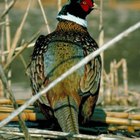
The Best Ways to Cook Pheasant Breast

How to Cook Barbecue Chicken Drumsticks ...
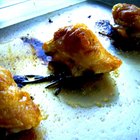
How to Cook Chicken Thighs

How Do I Cook Duck Legs in a Dutch Oven?

How to Marinate BBQ Chicken Thighs & ...

How to Make a Baked Stuffing

How to Prepare French Toast in Advance
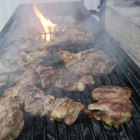
How to Grill Dove Breasts
How Long Do You Bake Veal Cutlets?

How to Cook Trevally
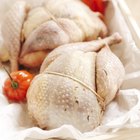
How to Grill Skinless Pheasant

How to Cook Oven-Baked Pork Tenders

How to Cook Calamari in the Oven
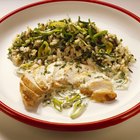
How to Cook Foster Farm Chicken Breast ...
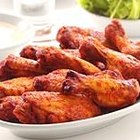
How to Make Easy Baked Spicy Chicken ...

How to Cook Chicken in Olive Oil With ...

How to Fry Liver

Can I Bread Chicken Breasts With Just ...

How to Cook Pancetta

How to Broil Chicken on the Bone
References
- North Dakota State University Extension: A Pocket Guide to Care and Handling of Game Birds
- Preparing Fish and Wild Game; Editors of Creative Publishing
- Cooking on the Wild Side; Albert Taillon, John Coo
- 500 Wild Game and Fish Recipes; Galen Winter
- The L.L. Bean Game and Fish Cookbook; Angus Cameron, Judith Jones
- Juliet Corson's New Family Cook Book; Juliet Corson
- The Deluxe Food Lover's Companion; Sharon Tyler Herbst, Ron Herbst
Writer Bio
M.H. Dyer began her writing career as a staff writer at a community newspaper and is now a full-time commercial writer. She writes about a variety of topics, with a focus on sustainable, pesticide- and herbicide-free gardening. She is an Oregon State University Master Gardener and Master Naturalist and holds a Master of Fine Arts in creative nonfiction writing.
Photo Credits
Tom Brakefield/Stockbyte/Getty Images